Microdiscectomy cost in India varies between INR 374175 to 498900 (USD 4500 to 6000) approx.
Spine Surgery is a type of neurosurgery that is also known as microdecompression. During this procedure, a small part of the bone decompressing the nerve root or the spinal cord is removed to relieve pain arising out of the condition. This procedure is considered to be more effective in the treatment of leg pain or sciatica arising out of compression of nerve root than the lower back pain. This treatment provides immediate relief from pain. The spine can get damaged due to various reasons such as structural abnormalities, trauma, improper body mechanisms, aging, to name just a few. These factors of spine injury most probably result in back pain, numbness, and leg pain as well as leg weakness. In the case of chronic back pain, a highly-professional team of medical staff is required to diagnose and treat the same.
Generally, Spine Surgery takes place when the non-surgical treatments such as physical therapy, medications, etc. have failed to show some positive results. However, a surgery happens only when the exact source of pain has been figured out, for instance – spinal stenosis, scoliosis or herniated disc.
The best spine surgery treatment in India arises with the modern infrastructure of hospitals with more than 100 beds and luxury suites, operation theatres, over one advanced laboratory, ICUs, patient interpreters, and advanced intensive therapy unit. The operation theatres are fortified with catheterization laboratory and laminar air flow system. The hospitals also have digital imaging facilities and computerized diagnostic laboratories. For the suitability of the patient, the spine hospitals also have emergency medical services, blood banks, Wi-Fi in the campuses, ambulance services, and multi-cuisine cafeterias.
These specialized hospitals for the treatment of microdiscectomy in India are fortified with the newest tools and machinery necessary for complete care and treatment. Few of the newest medical equipment in the Indian hospitals are CT scan, MRI scan, EEG, EMG, 2D Echo, digital X-ray, USG, PET- MR, C-Arm, BrainLab Navigation System, PET-CT, NovalisTx, Portable CT Scanner, DSA Lab, Tilting MRI, Cobalt based HDR Brachytherapy, Hyperbaric Chamber, Endosonography, Fibroscan, 128 Slice CT scanner, 3 Tesla MRI, Gamma Camera, AEC (Automatic Exposure Control) and Da Vinci Robotic Surgery.
Cost Comparison
Spine Surgery cost in India is much lower when compared to the Western countries in spite of the fact that the quality of services stays inflexible. This is one of the main reasons why India has developed as one of the major medical tourism centers in the world. The total price of spinal surgery in India, depends on the hospital prices, the total length of hospital stay, the cost linked with any side procedures if conducted and the payments charged by the surgeons. It may also depend on the recovery rate and the rehabilitation necessary after the procedure.
India is one such country which welcomes international patients with open arms who seek to undergo a high-quality and cost-effective Spine Surgery. With the intention of providing relief to as many people as possible from their back pain, the cost of Spine Surgery in India is highly reasonable. India boasts of internationally-trained medical professionals having endless years of experience in the field of Spine Surgery which with the help of state-of-the-art technology, ensure to treat the patients in the best manner possible.
Interestingly, the Spine Surgery cost in India is 60 to 70 percent lower than the rest of the well-developed countries such as the United States of America, United Kingdom, Russia, Australia, etc. However, you will notice that the cost of Spine Surgery in Delhi is quite different than the cost of Spine Surgery in Mumbai. Location of the hospital plays a major role in making a difference in the cost of Spinal Surgery in India. But, to be clearer, the approximate Spinal Surgery cost in India is $3,500 to $8,000. In the case of USA, UK, Thailand and Singapore, the cost of Spine Surgery is around $30,000 to $60,000, $32,000 to $48,000, $4,500 to $9,500 and $5,500 to $11,500 respectively.
However, there is one important point that you need to remember while estimating the cost of Spine Surgery. There are a lot of factors which affect the final cost of Spine Surgery. Some of the most well-known factors are –
Type of Surgery
Type of Hospital
Brand value of the hospital
Location of the hospital
Patient’s medical history
Surgeon’s expertise
| City | Minimum Cost (USD) | Minimum Cost (INR) | Maximum Cost (USD) | Maximum Cost (INR) |
|---|---|---|---|---|
| Hyderabad | USD 4500 | 374175 | USD 6000 | 498900 |
| Pune | USD 4050 | 336758 | USD 5400 | 449010 |
| Panjim | USD 3600 | 299340 | USD 4800 | 399120 |
| Ahmedabad | USD 4050 | 336758 | USD 5400 | 449010 |
| Mohali | USD 4050 | 336758 | USD 5400 | 449010 |
| Bangalore | USD 4500 | 374175 | USD 6000 | 498900 |
| Noida | USD 4500 | 374175 | USD 6000 | 498900 |
| Kolkata | USD 4500 | 374175 | USD 6000 | 498900 |
| Faridabad | USD 4050 | 336758 | USD 5400 | 449010 |
| Country | Minimum Cost | Minimum Local Currency | Maximum Cost | Maximum Local Currency |
|---|---|---|---|---|
| India | USD 4500 | INR 374175 | USD 6000 | INR 498900 |
| Thailand | USD 7800 | THB 278070 | USD 12000 | THB 427800 |
| Turkey | USD 4950 | TRY 149193 | USD 6050 | TRY 182347 |
| United Arab Emirates | USD 4000 | AED 14680 | USD 12000 | AED 44040 |
Treatment cost

MediGence is offering immense facilities for your medical journey such as:
With us, you are sure to receive all the benefits at competitive prices which is a better choice than paying actual hospital costs. The usual reason for this procedure is a herniated disc. A microdiscectomy takes away the pressure which is present on the spinal nerve root as it takes out the material which is the reason for the pain. A bit of the bone which is present over the nerve root and/or disc material is taken out which is under the nerve root. This procedure is better when leg pain has to be relieved rather than lower back pain., We bring to you the smartest of Microdiscectomy packages in Asya Hospital, Turkey containing all the benefits.

Types of Microdiscectomy in Sarvodaya Hospital and Research Centre and its associated cost
| Treatment Option | Approximate Cost Range (USD) | Approximate Cost Range (INR) |
|---|---|---|
| Microdiscectomy (Overall) | 5610 - 7106 | 455874 - 580119 |
| Open Microdiscectomy | 5608 - 5593 | 459692 - 458437 |
| Endoscopic Microdiscectomy | 6103 - 7085 | 498950 - 583728 |
DOCTORS IN 14 SPECIALITIES
FACILITIES & AMENITIES
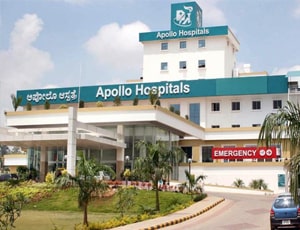
Types of Microdiscectomy in Apollo Hospitals Bannerghatta and its associated cost
| Treatment Option | Approximate Cost Range (USD) | Approximate Cost Range (INR) |
|---|---|---|
| Microdiscectomy (Overall) | 6289 - 7901 | 518045 - 654351 |
| Open Microdiscectomy | 6078 - 6214 | 499763 - 500959 |
| Endoscopic Microdiscectomy | 6888 - 7855 | 564743 - 642305 |
DOCTORS IN 13 SPECIALITIES
FACILITIES & AMENITIES
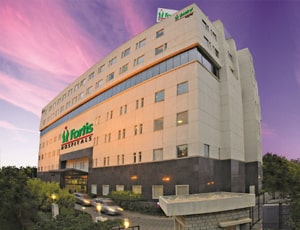
Types of Microdiscectomy in Fortis Hospital and its associated cost
| Treatment Option | Approximate Cost Range (USD) | Approximate Cost Range (INR) |
|---|---|---|
| Microdiscectomy (Overall) | 5597 - 7119 | 458842 - 584576 |
| Open Microdiscectomy | 5590 - 5568 | 459161 - 458633 |
| Endoscopic Microdiscectomy | 6109 - 7116 | 498229 - 583770 |
DOCTORS IN 12 SPECIALITIES
FACILITIES & AMENITIES

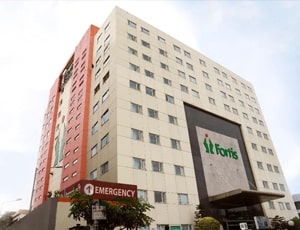
Types of Microdiscectomy in Fortis Hospital and its associated cost
| Treatment Option | Approximate Cost Range (USD) | Approximate Cost Range (INR) |
|---|---|---|
| Microdiscectomy (Overall) | 5573 - 7131 | 459146 - 585480 |
| Open Microdiscectomy | 5557 - 5561 | 458418 - 457010 |
| Endoscopic Microdiscectomy | 6110 - 7133 | 497062 - 582282 |
DOCTORS IN 12 SPECIALITIES
FACILITIES & AMENITIES
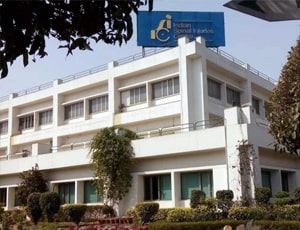
Types of Microdiscectomy in Indian Spinal Injuries Centre and its associated cost
| Treatment Option | Approximate Cost Range (USD) | Approximate Cost Range (INR) |
|---|---|---|
| Microdiscectomy (Overall) | 5604 - 7116 | 456741 - 583604 |
| Open Microdiscectomy | 5565 - 5590 | 459296 - 457591 |
| Endoscopic Microdiscectomy | 6095 - 7073 | 497596 - 584444 |
DOCTORS IN 2 SPECIALITIES
FACILITIES & AMENITIES
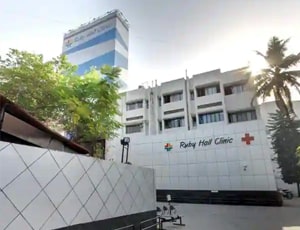
Types of Microdiscectomy in Ruby Hall Clinic and its associated cost
| Treatment Option | Approximate Cost Range (USD) | Approximate Cost Range (INR) |
|---|---|---|
| Microdiscectomy (Overall) | 5193 - 6581 | 415415 - 540102 |
| Open Microdiscectomy | 5107 - 5099 | 426872 - 419720 |
| Endoscopic Microdiscectomy | 5596 - 6455 | 453924 - 544900 |
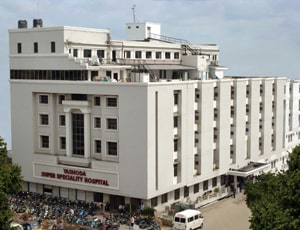
Types of Microdiscectomy in Yashoda Hospital, Malakpet and its associated cost
| Treatment Option | Approximate Cost Range (USD) | Approximate Cost Range (INR) |
|---|---|---|
| Microdiscectomy (Overall) | 5596 - 7115 | 459374 - 584097 |
| Open Microdiscectomy | 5608 - 5559 | 459275 - 455999 |
| Endoscopic Microdiscectomy | 6063 - 7109 | 498255 - 581419 |
DOCTORS IN 10 SPECIALITIES
FACILITIES & AMENITIES
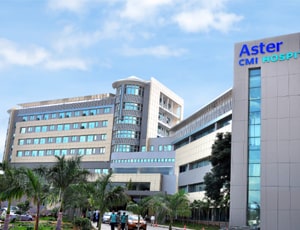
Types of Microdiscectomy in Aster CMI Hospital and its associated cost
| Treatment Option | Approximate Cost Range (USD) | Approximate Cost Range (INR) |
|---|---|---|
| Microdiscectomy (Overall) | 5602 - 7084 | 457930 - 580429 |
| Open Microdiscectomy | 5607 - 5562 | 457739 - 457730 |
| Endoscopic Microdiscectomy | 6119 - 7095 | 498430 - 582418 |
DOCTORS IN 13 SPECIALITIES
FACILITIES & AMENITIES
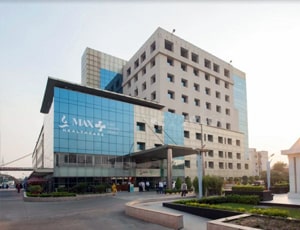
The cost for Microdiscectomy ranges from USD 5500 - 6530 in Max Super Specialty Hospital, Vaishali
Max Super Specialty Hospital, Vaishali located in Ghaziabad, India is accredited by NABH, NABL. Also listed below are some of the most prominent infrastructural details:
DOCTORS IN 14 SPECIALITIES
FACILITIES & AMENITIES
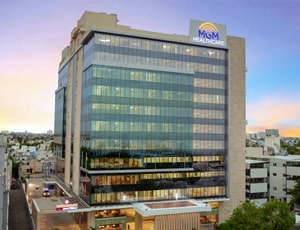
Types of Microdiscectomy in MGM Healthcare and its associated cost
| Treatment Option | Approximate Cost Range (USD) | Approximate Cost Range (INR) |
|---|---|---|
| Microdiscectomy (Overall) | 5607 - 7126 | 456854 - 581522 |
| Open Microdiscectomy | 5580 - 5570 | 455530 - 457539 |
| Endoscopic Microdiscectomy | 6119 - 7129 | 501354 - 580698 |
DOCTORS IN 13 SPECIALITIES
FACILITIES & AMENITIES
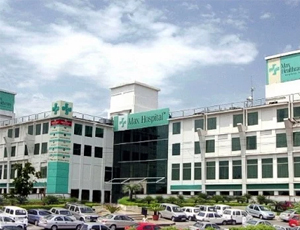
Max Hospital (Gurgaon branch), one of the top medical facilities in India, was established in 2007. Max Gurgaon Hospital is the first multi, super specialty tertiary care in the Location. Out of many other awards, the hospital also possesses the Express Healthcare Awards for Excellence in Healthcare. It is also certified to ISO 9001:2000 standards. The Institute of Minimal Access, Metabolic & Bariatric Surgery at Max Gurgaon has been designated as a Center of Excellence for providing cutting-edge Clinical Services and Surgical Training Programs for Abdominal Wall Hernia Surgery.
Over 5 lakh patients have been treated at the 92-bed Max Hospital Gurugram, which holds expertise in 35 specialized fields such as Cardiac Sciences, Minimal Access, Laparoscopic Surgery, Neurosciences, Urology, Orthopaedics, Aesthetics, Reconstructive Surgery, and Nephrology. The laboratories at Max Healthcare hospitals are accredited by NABH and NABL. It also provides hemodialysis for patients who have end-stage kidney disease and requires renal replacement therapy. Team of doctors and nurses at the hospital provides integrated medical care in a multi-disciplinary setting. As a result, it has received multiple awards and accreditations.
International patients have been treated impeccably here as all the nursing staff, shift doctors, and treating doctors are quite courteous and supportive towards the patients. There is no doubt that being in the hospital can make you feel at home.
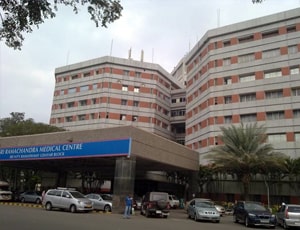
Types of Microdiscectomy in Sri Ramachandra Medical Centre and its associated cost
| Treatment Option | Approximate Cost Range (USD) | Approximate Cost Range (INR) |
|---|---|---|
| Microdiscectomy (Overall) | 5586 - 7095 | 459542 - 584489 |
| Open Microdiscectomy | 5592 - 5602 | 455622 - 457373 |
| Endoscopic Microdiscectomy | 6092 - 7118 | 497216 - 580664 |
DOCTORS IN 10 SPECIALITIES
FACILITIES & AMENITIES
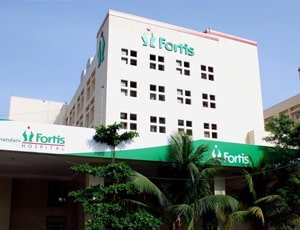
Types of Microdiscectomy in Fortis Hiranandani Hospital and its associated cost
| Treatment Option | Approximate Cost Range (USD) | Approximate Cost Range (INR) |
|---|---|---|
| Microdiscectomy (Overall) | 5577 - 7081 | 456840 - 580776 |
| Open Microdiscectomy | 5602 - 5585 | 455982 - 459971 |
| Endoscopic Microdiscectomy | 6065 - 7111 | 501585 - 583307 |
DOCTORS IN 13 SPECIALITIES
FACILITIES & AMENITIES
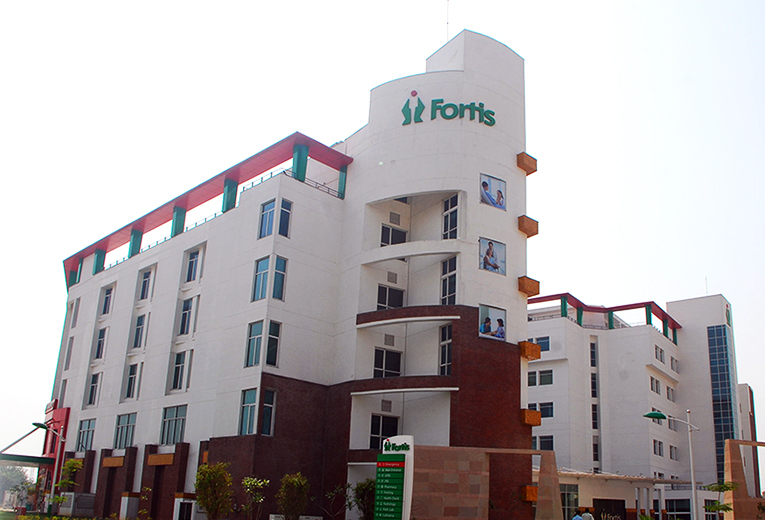
Types of Microdiscectomy & Its Cost at Fortis Hospital, Shalimar Bagh
| Treatment Option | Approximate Cost Range (USD) | Approximate Cost Range (INR) |
|---|---|---|
| Overall Microdiscectomy Cost | 3,000 - 7,000 | 246000 - 574000 |
| Microdiscectomy (Single-level) | 3,000 - 6,000 | 246000 - 492000 |
| Microdiscectomy (Multi-level) | 4,000 - 7,000 | 328000 - 574000 |
Factors affecting Microdiscectomy cost in Fortis Hospital, Shalimar Bagh
| Cost Factors | Cost Range (USD) | Cost Range (INR) |
|---|---|---|
| Hospital Charges (Per Day) | 100 - 200 | 8200 - 16400 |
| Surgeon's Fees | 1,000 - 2,000 | 82000 - 164000 |
| Anesthesia Charges | 300 - 600 | 24600 - 49200 |
| Medications | 100 - 400 | 8200 - 32800 |
| Diagnostic Tests | 150 - 300 | 12300 - 24600 |
| Doctor Consultation | 50 - 100 per visit | 4100 - 8200 (per visit) |
| Physiotherapy | 100 - 200 | 8200 - 16400 |
| Medical Imaging (X-rays, MRI) | 300 - 600 | 24600 - 49200 |
DOCTORS IN 14 SPECIALITIES
FACILITIES & AMENITIES
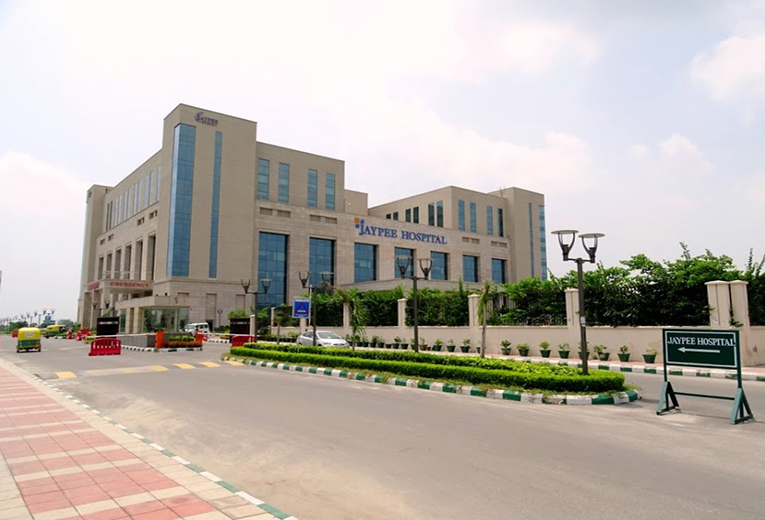
Types of Microdiscectomy & Its Cost at Jaypee Hospital
| Treatment Option | Approximate Cost Range (USD) | Approximate Cost Range (INR) |
|---|---|---|
| Overall Microdiscectomy Cost | 2,000 - 7,000 | 164000 - 574000 |
| Microdiscectomy (Single-level) | 2,000 - 5,500 | 164000 - 451000 |
| Microdiscectomy (Multi-level) | 3,000 - 7,000 | 246000 - 574000 |
Factors affecting Microdiscectomy cost in Jaypee Hospital
| Cost Factors | Cost Range (USD) | Cost Range (INR) |
|---|---|---|
| Hospital Charges (Per Day) | 100 - 200 | 8200 - 16400 |
| Surgeon's Fees | 1,000 - 2,000 | 82000 - 164000 |
| Anesthesia Charges | 300 - 600 | 24600 - 49200 |
| Medications | 200 - 500 | 16400 - 41000 |
| Diagnostic Tests | 150 - 300 | 12300 - 24600 |
| Doctor Consultation | 50 - 100 per visit | 4100 - 8200 (per visit) |
| Physiotherapy | 50 - 200 per session | 4100 - 16400 (per session) |
| Medical Imaging (X-rays, MRI) | 300 - 600 | 24600 - 49200 |
DOCTORS IN 14 SPECIALITIES
FACILITIES & AMENITIES
Microdiscectomy is also known as microdecompression or cervical microdiscectomy. It is one of the most commonly performed spine surgery procedures.
Microdiscectomy or cervical microdiscectomy is preferred for patients with a lumbar herniated disc. The main goal of a discectomy is to relieve the pressure on a spinal nerve root by removing the material causing the pain. Traditionally, this purpose was solved by an open technique called lumbar discectomy surgery, which involves making a large incision to cut some of the back muscles, leading to a slow and painful recovery. Nowadays, an advanced form of surgery called microdiscectomy can achieve the same goal that too with the help of a small incision and fewer injury to back muscles. As a result, the recovery takes less time and is less painful. A special microscope is used in microdiscectomy to view the disc and nerves. The larger view allows the surgeon to make a smaller incision, causing less damage to the surrounding tissues.
Sciatica is a condition caused by compression of the spinal nerve, which generally results in chronic pain in the legs of the patients. This compression of the spinal nerve is frequently the result of a herniated lumbar disc. As a herniagrows, the damaged tissue extends into the spinal column and pushes on the nerves. This condition causes the nerves to send pain signals to the brain and the brain interprets the pain source to be coming from the legs.
Most commonly, sciatica heals naturally or with the help of medication in a few weeks. But, if sciatica lasts more than 12 weeks after taking oral medicines, patients may benefit from discectomy. Discectomy is also used for the treatment of spondylosis and lumbar spinal stenosis. While spondylosis occurs due to degenerative osteoarthritis of the vertebrae, lumbar spinal stenosis occurs due to narrowing of the spinal canal leading to nerve compression. The latter may also warrant the need for a spinal stenosis surgery.
Lumbar discectomy surgery is typically performed for rehabilitation of a herniated disc. The same thing is done during microdiscectomy, but with the help of a special microscope. During this procedure, a small part of the bone over the nerve root and disc material under the nerve root is taken out, which finally result in relieving pressure on the spinal nerve column. The microdiscectomy treatment starts by giving general anesthesia to the patient. The patient will be unconscious during the entire surgery and is not able to feel anything. Preoperative intravenous antibiotics are given before the surgery.
The procedure is performed with the patient lying face down, generally using a special operating table with special paddings. The surgical region is cleansed with a cleaning solution. A one-to two-centimeter incision is made directly over the area of the herniated disc. Special retractors and a lighted operating microscope are used to allow the surgeon to see the region of the spine. It helps in minimizing or avoid cutting of the adjacent muscles and tissues.
Before removing a herniated disc, a small piece of bone called lamina is removed from the affected vertebra. This is called a laminotomy, a procedure which allows the surgeon to fully visualize the herniated disc. Small scissor-like tools and grasping instruments are used to remove the protruding disc material. Lastly, the incision area is washed out with sterile water containing antibiotics and the deep fascial layer and subcutaneous layers are closed with a few sutures. The skin is fixed up using special surgical glue and does not require bandages.
The microdiscectomy recovery time is much less than any other invasive procedure. Typically, the patient can expect to leave the hospital within 24 hours of the surgery. Patients may be advised to meet a physical therapist before leaving the hospital. The therapist will instruct the patient on how to reduce twisting and bending of the back. The therapist may advise some exercises to improve the strength and flexibility of the muscles around the spine.
Patients are advised not to drive, sit for a prolonged period, lift anything heavy and bend over immediately after the surgery. The patient is able to resume normal activities after two weeks, but they are advised to avoid lifting heavy objects for at least four weeks after the surgery. Full recovery after microdiscectomy procedure takes at least four to six weeks.
Microdiscectomy is a faster pain relief option than nonsurgical treatment in case of a lumbar herniated disc, but it is not significantly clear that whether surgery makes a difference in what treatment may be needed later on.
Some post-microdiscectomy researchers determined that people who have had microdiscectomy have reported similar improvements as other treatments after one year of surgery. Although it is a less invasive procedure in comparison to other treatment such as spinal fusion, microdiscectomy also involves certain risks just like any other surgery.
Some of the common microdiscectomy risks are:
Ask your healthcare adviser for the best multiple options and choose the one that meets your expectations
The minimum cost of Microdiscectomy in India is about USD$ 3000. Microdiscectomy in India is available across many hospitals in different states.
The cost of Microdiscectomy in India may differ from one medical facility to the other. The cost quoted by some of the best hospitals for Microdiscectomy in India generally covers the pre-surgery investigations of the patient. The Microdiscectomy package in India includes the fees of the surgeon, hospitalization and anesthesia as well. Extended hospital stay, complications after the surgery or new diagnosis may affect the overall cost of Microdiscectomy in India.
Microdiscectomy in India is offered by multiple hospitals across the country. For quick reference, the following are some of the leading hospitals for Microdiscectomy in India:
After Microdiscectomy in India, the patient is supposed to stay in guest house for another 14 days. This duration of stay is recommended to complete all the necessary follow-ups and control tests to ensure that the surgery was successful.
India is one of the most popular countries for Microdiscectomy in the world. The country offers the best treatment of Microdiscectomy, best doctors, and advanced hospital infrastructure. Some of the other top destinations for Microdiscectomy include the following:
Apart from the Microdiscectomy cost, the patient may have to pay for additional daily expenses such as for guest house after discharge and meals. The per day extra expenses in India per person is about USD$ 25
Microdiscectomy in India is offered in almost all metropolitan cities, including the following:
After Microdiscectomy, the patient is supposed to stay for about 1 days in the hospital for recovery and monitoring. The doctors team review the patient's recovery during this time with the help of blood tests and imaging scans. Once they feel that everything is on track, the patient is discharged.
Microdiscectomy hospitals in India have an overall rating of about 4.9. This rating is calculated on the basis of different parameters such as attitude of the nurses, cleanliness, quality of food and the pricing policy.
There are about 64 hospitals in India that offer Microdiscectomy to international patients. Apart from good services, the hospitals are known to follow all standard and legal guidelines as dictated by the local medical affairs body or organization.
Microdiscectomy Surgery in India has developed as one of the effective surgeries. In India, the complete solutions for the best microdiscectomy surgeries are accessible across the country. The rebuilding and maintenance of spine function by dealing disorders of the spine with both non-operative and difficult surgical treatment modalities, microdiscectomy is a truly distinctive subspecialty of
After its wide-ranging attendance on the worldwide medical arena, microdiscectomy in India is methodically concentrated on how to make sure it's patients befit of their spinal disorders or conditions easily. Well equipped with innovative medical technologies such as Computerized Tomography, Neuro-Navigation, advanced computerized image guidance system, Magnetic Resonance Imaging and many more, India is making sure to progress with its outstanding built-in-class spinal surgeries and treatments in India.
List of best doctors in microdiscectomy in India:
Some of the best cities to get Lumbar Microdiscectomy treatment in India done include Hyderabad, Mumbai, Delhi, Bangalore, Pune, Chennai, Ahmedabad, and Kolkata.
These metropolitan cities have highly skilled and acclaimed doctors, cost-effective treatment procedures and world-class medical facilities. These hospitals provide many services including a private chef, supporting staffs, translators and private rooms with phone and Wi-Fi connections. They offer quality health services at reasonable costs alongside the finest treatment with positive results.
The list of world-class Spine hospitals in India is as follows
Being one of the best healthcare destinations in the world, India provides all kinds of Spine Surgeries to the patients. However, the most popular types of Spine Surgeries in India are –
Due to a hernia, the discs of the spine are pushed outwards which also affects the nerves surrounding the area. In order to treat the same, the procedure of Discectomy takes place in which a section of the disc gets removed.
A roof-like covering called Lamina has the feature of basically protecting the spinal cord. In case the nerves inside the Lamina get compressed, it is treated by opening up the Lamina in order to operate the nerves.
In this procedure, a destabilized spine is temporarily stabilized by keeping two or more parts of the bone at a firm place with the help of screws and rods. As time goes by, the tissue of the bone grows over the mechanical parts making them act like a single solid bone which as a result provides the structure its planned rigidity.
When only a single disc creates complexities and all the other surrounding discs and facet joints are okay, then that one disc is replaced with the help of Disc Replacement procedure.
The passages that carry nerve bundles from the spinal cord are known as intervertebral foramina. There are times when due to intervertebral foramina, the nerves get compressed. In order to relieve the pressure, Foraminotomy is carried out which is basically a minimally invasive procedure.
Patients who undergo the Spine Surgery in India can easily get out of bed and walk within that particular day or the next day. In order to keep the effects of the surgery long lasting, the patients are told to walk and do ordinary daily activities in a limited manner. Patients should avoid lifting heavy things, bending frequently, turning, climbing or twisting for first 6 weeks right after the surgery.
After the completion of 6 weeks, the patients are given physical therapy in order to gain strength and recover at a fast rate. When the first 3 months are over, the patients can increase the number of daily activities and slowly perform any sports activity which is very low on impact.